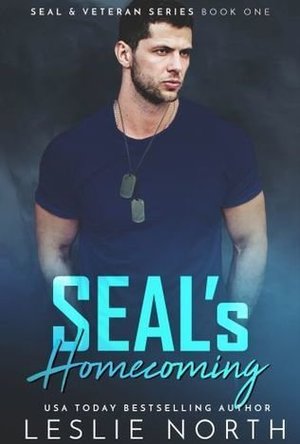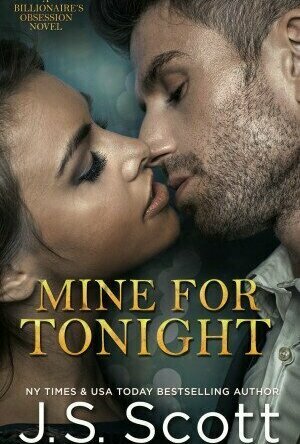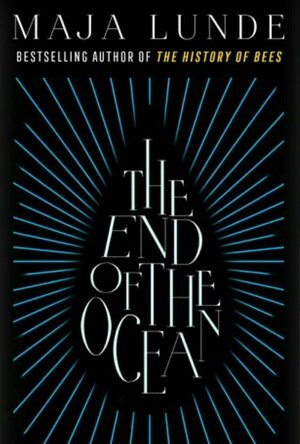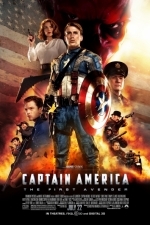Midge (525 KP) rated SEAL's Homecoming in Books
Jan 31, 2019 (Updated Jan 31, 2019)
Chance McCallister is a Navy SEAL with dark brown eyes a perfectly honed body and likes sprucing up classic cars. He and his brothers have returned to their home town of Springwell, Georgia for their father’s funeral. Chance buys the car parts from the garage that his ex-girlfriend owns, who he is trying to avoid and hasn’t seen for twelve years. No problem, unless things start to get complicated....
Enter Mandy Loomis, a stunning, petite, curvy, russet-haired beauty, to whom he lost his virginity and who he thought he’d marry until she ripped out his heart just before he left for the Navy. Mandy’s gambler father died two years ago, leaving her the garage family business and a whole load of related debt, owed to a loan shark.
To Mandy, Chance was her childhood sweetheart who abandoned her 12 years ago. Then he was 18 years old, now she is drowning in lust for him and he is bigger, stronger and even sexier, with an aura of danger and a reputation of fighter and predator. Just as the two are beginning to realize they could have a future together, the loan shark starts to make some serious trouble for them, putting both their love and their lives in danger.
Although Chance has a bad-boy image, I loved the sexy chemistry between him and Mandy whenever they were together and they were both very likeable characters. Mandy is bright, ambitious, fiercely independent and very much knows her own mind. Chance is gorgeous and his actions are always carried out with good intentions.
"SEAL’s Homecoming" is a short fast-paced read with lots of action, some suspense and plenty of lust and love. Leslie North has written another brilliant story that was sweet and captivating to the end and loads of fun to read.
I would wholeheartedly recommend this book to anyone.
Thank you to Hidden Gems and the author, Leslie North, for a free ARC of this book in exchange for a voluntary, honest review.
Kara Skinner (332 KP) rated Mine for Tonight in Books
Nov 3, 2019
I have to admit, I picked this book up because the heroine’s name is Kara. I mean, how perfect is that, right? And I really liked this book. It was difficult for me to not get a little creeped out by Simon. Like, what stable-minded person follows someone around for over a year without even meeting her? I know he’s more like a guardian angel wanting to protect her and less like a stalker wanting to kill her, but really. There’s a difference between socially awkward and asking for a restraining order. But I loved how much he cares for Kara. Even though he’s a private person, he’s willing to open up his home to her without payment. (Yes, he does ask her to sleep with him, but he makes it pretty clear that that part is optional.) He’s definitely damaged, as is Kara. She’s struggling with a lot of things, like her last relationship which crashed and burned, and her parents’ deaths. Being stuck in nickel and dime mode after years of supporting herself makes it hard for Kara to accept Simon’s help, especially when he likes to spoil her. Her inability to stay indebted was why Simon gave her the sex payment option to begin with, although she ended up taking it because she wanted it. I really liked how hard-working she was. She’s not a traditional damsel in distress to be sure, and she keeps her independence even after Simon takes her in. Long story short, it didn’t take me long to buy the entire series.
ClareR (6037 KP) rated The End of the Ocean in Books
Nov 6, 2019
In the present day(2019), 69 year old environmental activist Signe discovers that her home town, and in particular her ex-boyfriend, is responsible for cutting up and shipping off ice from their glacier to sell to the rich, so that they can have glacial ice in their expensive cocktails. She decides to sabotage the shipment, and steals some of it - or what she can carry in her boat. She sails her ship through a terrible storm with the intention of taking it to the person responsible.
In 2041, David and his daughter Lou, arrive at a refugee camp after escaping from war and fire in their French home. There is little water and food, but David is hopeful that his wife and infant son (who they’ve been separated from) will be there or arrive soon.
The two stories are linked when David and Lou find Signe’s boat in the garden of one of the abandoned houses.
This is such a powerful book. It takes current scientific research and arrives at the extreme end of its prediction: drought, famine and war. I had to read it in short chunks, because I found the story so moving and intensely depressing, to be honest. It doesn’t feel exaggerated: I didn’t read it thinking “Well that would NEVER happen”. It’s all too plausible, in fact. I really liked how the two stories ran parallel to one another and joined up in the latter half of the book, with the boat as some sort of symbol of hope.
It’s not all depressing though. There is an element of hope, and we see the enduring strength of the human spirit. I have The History of Bees on my bookshelf, which I will read now - and I’ll definitely look out for the third in this quartet of books.
Many thanks to NetGalley and Simon and Schuster UK for my copy of this book.
JT (287 KP) rated Captain America: The First Avenger (2011) in Movies
Mar 10, 2020
Evans starts off as a scrawny weakling, desperate to serve his country during World War II. You’ll have to look hard to realise that Evans’ appearance is a brilliant piece of CGI, no man could get to that size and back in such a short space of time.
He then gets himself accepted as part of an experiment to transform average soldiers into supreme physical beings. Rogers, now a beef cake becomes an American poster boy for the war promoting everything the American public should stand for.
Singing in chorus lines he longs to be part of the action, to get onto the front line and to help bring down HYDRA, and its main villain Johann Schmidt aka Red Skull.
The film moves through the gears, massive explosions and some great action set pieces. But you’d expect nothing less, director Joe Johnston injects the film with enough to tie over until a rather disappointing ending.
One of the bright lights however is Weaving, whose Red Skull is one of the more colourful villains we might have seen in recent times. His penetrating persona gives the film a lift when otherwise it was heading for the doldrums.
Captain America does what pretty much every other super hero film has done before it, starts as an origins story, throws some back history in along with a lot of action but ultimately fails on the big pay off.
We all know where the film is going though, as most will have seen all the trailers surrounding The Avengers, for me though this is just another missing piece of the puzzle that will lead onto a much greater film. After which Captain America will pretty much be all but forgotten.

Yarn - Chat Fiction
Book and Entertainment
App
Yarn - Text Stories Ever wanted to snoop through people’s conversations and not feel guilty for...

Philosophy Now
Education and Magazines & Newspapers
App
Philosophy Now is a magazine for everyone interested in ideas. It aims to corrupt innocent citizens...

Fast Jets and Other Beasts: Personal Insights from the Cockput of the Hunter, Phantom, Jaguar, Tornado and Many More
Book
Over a thirty-two-year military flying career which spanned a period when the RAF regularly replaced...
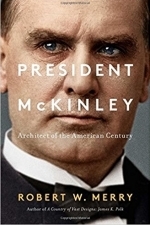
President McKinley: Architect of the American Century
Book
"A deft character study of a president."--The New York Times Book Review "A valuable education on...
biography history

Thumbelina ~ 3D Interactive Pop-up Book
Games and Book
App
Meet Thumbelina, a girl no bigger than your thumb! Join Thumbelina in this magical 3D interactive...
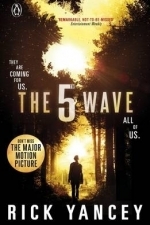
The 5th Wave: Book 1
Book
*NOW A MAJOR FILM by Sony Pictures, starring Chloe Grace Moretz* 'Wildly entertaining ...I couldn't...
